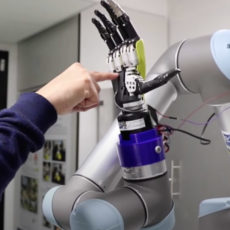
First, there were these dead spiders turned robots, and now, Harvard researchers have created an ant-like robot swarm capable of escaping from a prison without needing a specific plan. Called RAnts, these robots don’t give off chemical pheromones, so they rely on following the gradient of the photoromone field to avoid others where the field density is high.
By also picking up obstacles where the density was high and moving them to areas with low density, these robots interacted similar to their real-life counterpart. When RAnts were put in their own corral, encompassed by rings of small obstacles, they managed to figure out the best escape plan after working together and focus on a single spot.
- 🎁 Perfect Gift for Kids & Teens: Looking for an ideal gift for kids aged 8+? This robot building kit is the perfect gift for birthdays, holidays,...
- 🔧 STEM Educational Toys: Our programmable Robotic sets offer interactive learning experiences. As kids construct and program robots, they grasp...
- 📱 Flexible Dual Control Options: Control the STEM robot using the remote or intuitive app, featuring modes such as path, gyro, one-handed driving,...
We showed how the cooperative completion of tasks can arise from simple rules and similar such behavioral rules can be applied to solve other complex problems such as construction, search and rescue and defense. Our work, combining lab experiments, theory and robotic mimicry, highlights the role of a malleable environment as a communication channel, whereby self-reinforcing signals lead to the emergence of cooperation and thereby the solution of complex problems,” said S Ganga Prasath, a postdoctoral fellow at the Harvard John A. Paulson School of Engineering and Applied Sciences.







